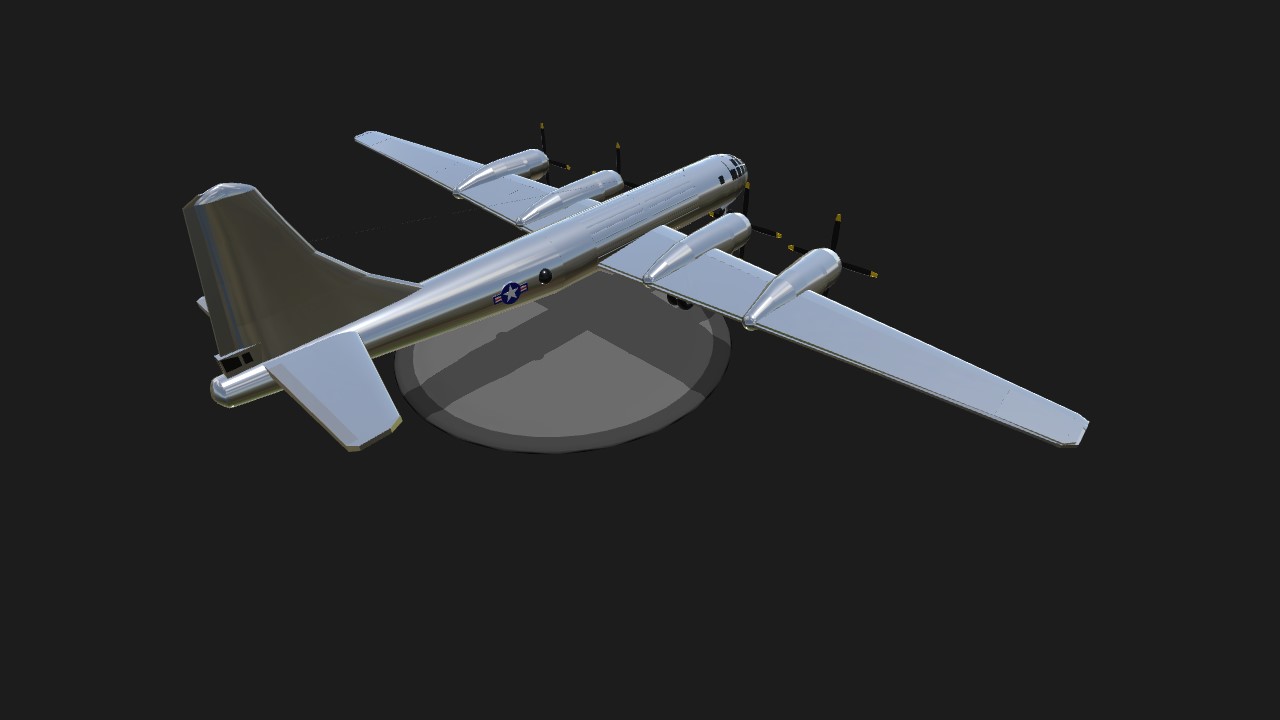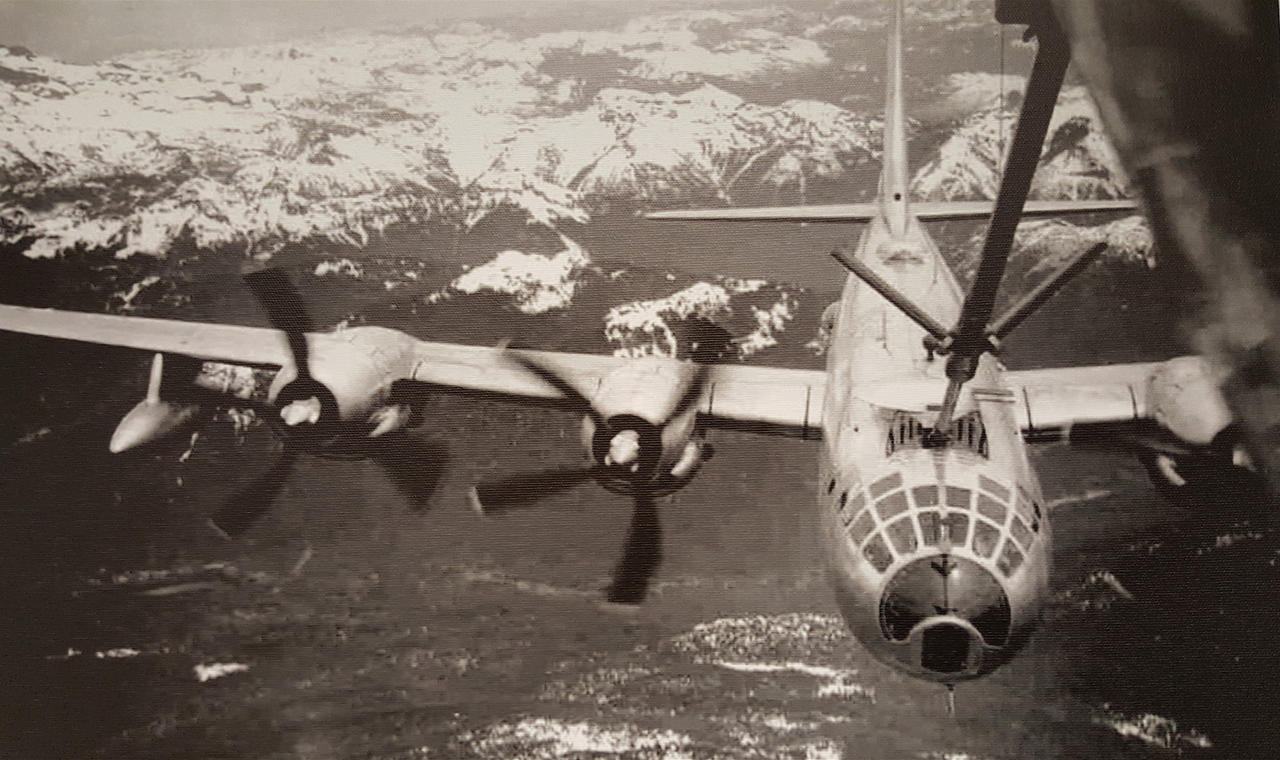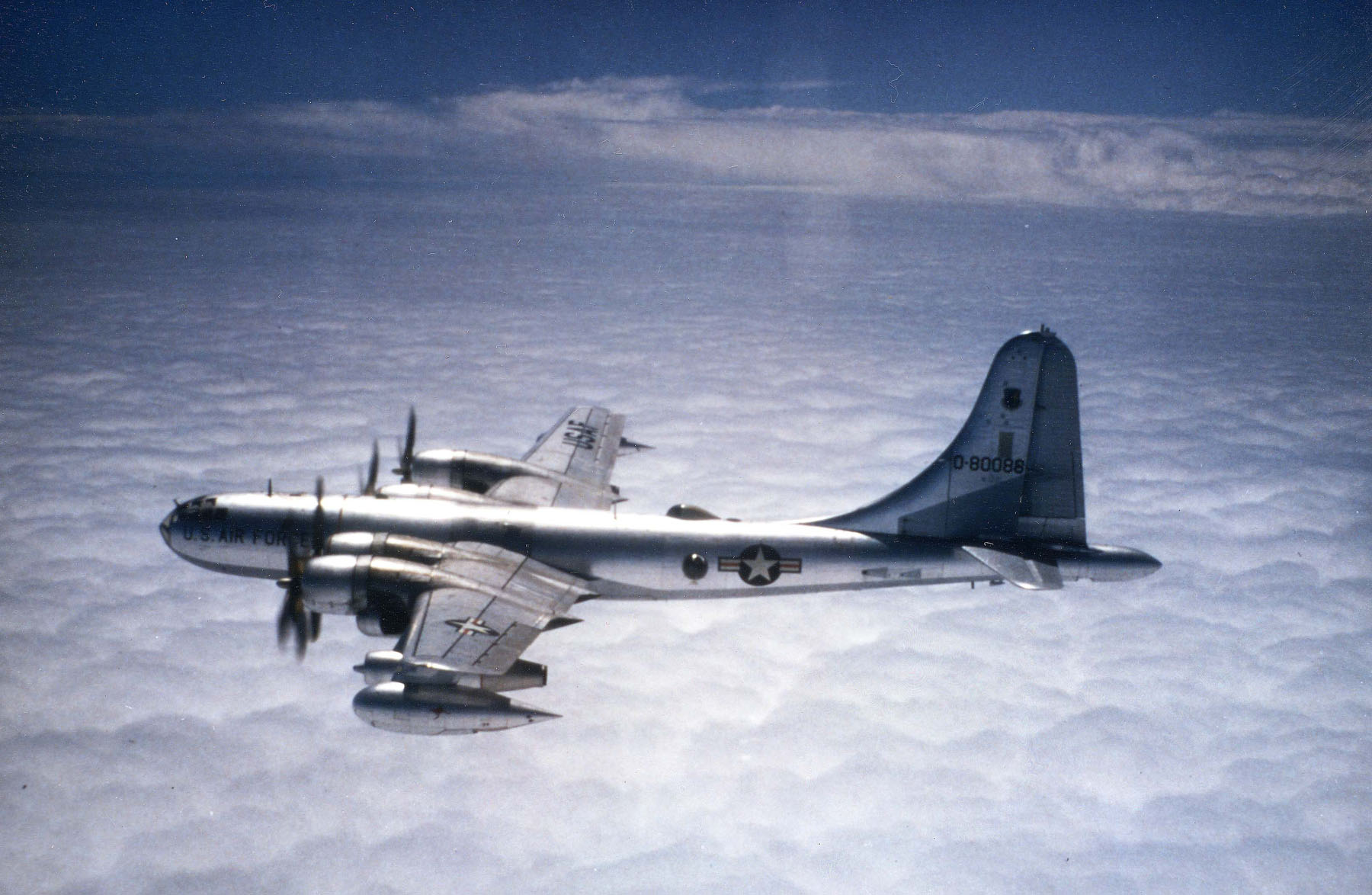B 50 Aircraft - Exam time! What secret work of the American military during World War II was more expensive than the $ 2 billion Manhattan Project that created the American atomic bomb?
This is the $3 billion B-29 Superfortress, a large four-engine bomber designed to fly long distances and drop those atomic bombs.
B 50 Aircraft

The silver lining of the B-29 was four large R-3350 Duplex Cyclone turbocharged engines that allowed the 37-ton plane (when empty!) to fly between 290 and 350 miles. per hour and at altitudes greater than 30,000 feet. making it very difficult for Japanese insurgents to reach them.
Boeing B 17 Flying Fortress
But even as World War II approached, the Air Force realized that the advantages of the Superfortress would soon be eclipsed by the advent of the turbojet fighter. As the Cold War intensified in the late 1940s, it became essential for the Air Force to have a nuclear bomb that could strike Russia from US bases.
These requirements resulted in a new B-29D model with engine power increased nearly 60 percent using a 3,500- horsepower Wasp Major R-4360 and a composite fabric made of strong 75-S aluminum alloy. but clean. Along with this the weight of the wings was reduced by 600 pounds and the speed increased to almost 400 miles per hour. Other trims include a longer tail, hydraulically-assisted steering, and winglets and windows.
The end of World War II saw the cancellation of B-29 orders. To save the program, the military re-designated the B-29D as the B-50 to indicate that the aircraft had more original design drawings than it actually did; This is not the first time or the last time that fake airline names have been used for political purposes.
Only a small number of sixty B-50As were produced in Washington, and these became the flagship of the Strategic Air Command's nuclear-capable fighter jet in 1948 until the B-36 Peacemaker succeeded. and the B-47 Stratojet jet bombers entered service. . .
Upgrades For Manfred Jahn Boeing C 97 And B 50
A small number of B-50Bs were then built with lighter fuel cells, until the Air Force settled on the B-50D to commit to mass production of 222 bombers. The latest model reduced the number of crew from eleven to eight, there were supplies for the oil tanks outside, showing the streamlined nose, and with in-flight storage.
The B-50 also suffered its share of teething problems due to faulty pressure control, engine problems, and cracking of its aluminum skin which cost several a few years to polish. In addition, as the Pentagon continued to quickly install new types of nuclear bombs, the B-50 bombers had to be converted to fit their bombers.
When the Korean War broke out in the 1950s, only the older B-29s were called upon to carry out non-nuclear strikes, where they suffered a fatal crash against Soviet MiG-15 fighter jets. With a speed approaching 680 miles per hour and a high rate of climb, the MiG-15 proved that even the high speed and high altitude of the B-50 was of little use. due to the advancement of aviation technology. This led to the cancellation in 1949 of a redesigned model first called the YB-50C with 4,500 horsepower engines.

However, the B-29 and B-50 were at the forefront of pioneering the use of air to air, which enabled the type of long-range bombing raids sought by the SAC. Initially, it involved converting the B-29s to the KB-29 tank, which would use a longer nozzle to fill the nuclear-armed B-50s.
Fifi: World's Only Flying Superfortress Airplane
Became the first aircraft to circumnavigate the globe in a dramatic ninety-four-hour flight between February 26 and March 2. (A first attempt by the B-50
Had to stop due to engine failure). At least four pairs of KB-29M aircraft flew from the Azores, Saudi Arabia, the Philippines, and Hawaii during its 23,452-mile trip. This record will eventually be broken in 1956 in less than half the time by a new B-52 bomber.
Prior to that, in 1953, the B-47 began entering the fleet as the B-29s were retired, which meant that the B -50s to handle supporting roles. Surprisingly, the B-50 would see more action in these support roles than as a bomber.
In total, 136 B-50s were converted to KB-50 tanks. Beginning in 1956, 112 were modified to the KB-50J model by adding J-47 turbojet engines from the B-47 bomber to help them maintain high speed and altitude to match bomb is loaded. Additional turbojets increased the KB-50J's top speed to 444 miles per hour, faster than World War II Mustangs.
Boeing B 50a Superfortress Usaf Four Engine Medium Bomber
The RB-50B and RB-50E were photo-detection aircraft that were launched on Soviet and North Korean space missions. Some of these "ferret" missions were intended to provoke Soviet attacks, allowing American spies to listen in on the results of conversations on the radio and radar, to find out what kind of defenses there are.
The RB-50G is an electric spy plane filled with special consuls, with an additional crew of sixteen. This also seemed like a risky mission: in 1953 the RB-50G
Shot down near Vladivostok two MiG-17 fighters. Of the eighteen crew members who could be rescued, only the pilot survived the icy waters of the Sea of Japan to be rescued by an American destroyer.

Even the WB-50D, a "storm hunter" aircraft operated by the National Weather Service to track weather conditions and measure radiation levels to monitor Soviet nuclear tests in the early part of the 1950. These events saw the most Rude operations with six WB-50s lost with their entire crew. WB-50 weather reports helped determine U-2 spy planes that found Soviet nuclear missiles in Cuba, sparking the Cuban Missile Crisis.
Boeing B 50 Superfortress Military Aircraft Testing 1950s Press Photo
Various versions of the B-50 were eventually retired in the 1950s, their aluminum airframes obsolete. Half a century later, the C-135 family of aircraft based on the 707 aircraft continues to perform many of the support roles established by the B-50, especially air support in the air continues to support the air force. at twenty. - first century.
Although the B-29 was responsible for three of the deadliest bombings in history, the fire bombing of Tokyo and the atomic bombings of Hiroshima and Nagasaki, its successor, the B-50, never dropped a bomb. in anger.
In the war. The RB-53G that was shot down near Vladivostok fired ineffectively at its pursuers. And on March 15, 1953, a WB-50 flying in international space near the Kamchatka Peninsula was intercepted by two MiG-15s. These fighter jets followed each other for a while before one of them opened fire and the WB-50 returned fire. Fortunately, by this time everyone had returned to base.
Sébastien Roblin has a master's degree in conflict resolution from Georgetown University and served as a university instructor for the Peace Corps in China. He also worked in education, publishing, and refugee resettlement in France and the United States. He currently writes on security and military history for War Is Boring. The Boeing KB-50 is a modification of the Boeing B-50 Superforts to meet the USAF's need for refueling. Two main versions were developed and produced: the KB-50J and the KB-50K.
Majestic World War Ii Bombers Flying At Evansville Airport On Sept. 22
The United States Air Force planned the conversion of a total of 134 B-50 bombers (from the B-50A, RB-50 and B-50D versions) for airlift, when no longer needed by the Air Command. plan. Like the KB-50 helicopter, the wings were strengthened, as well as the integration of the necessary systems to re-issue 3 fighters through the probe-cta system. The changes, which were given to the Hay Aircraft Corporation, also included the removal of the protective weapon and the replacement of the tail section. Although it was estimated that these changes would last until December 1957, the project was ahead of schedule.
The first KB-50 flew in December 1955, and was accepted by the USAF in January 1956. By November 1957, all KB-50s had been replaced by KB-29s Tactical Air Command. Due to the success of the aircraft, the TAC requested more aircraft, although the request was not fulfilled, when the conversion line of the Hay Aircraft Corporation was closed.
Model airplanes. Only one was built. Later conversion was a TB-50D also known as KB-50D.

B-50 tank with improved performance thanks to two additional General Electric J47 engines under the wings. 112 da of models B-50D, TB-50D, RB-50E, RB-50F and RB-50G. The Boeing B-50 Superfortress is an American strategic bomber. A post-World War II revision of the Boeing B-29 Superfortress, it was equipped with more powerful Pratt & Whitney R-4360 radial engines, a robust structure, a long tail, and other improvements. The single-piston bomber was developed by Boeing for the United States Air Force, and was further improved in Boeing's latest design, the B-54. Although not as popular as its direct predecessor, the B-50 saw service with the USAF for nearly 20 years.
B 29 Tarzon By David Eales (monogram 1/48)
After its initial service with the Strategic Air Command (SAC), the B-50 airframes were replaced by Tactical Air Command (TAC) tanks (KB-50) and fighter jets (WB-50) for Air Weather Service. All versions of the tank and hurricane hunter
Kessler axles, axles aircraft drone, dynatrac axles, sixity axles, honda axles, axles aircraft drone instructions, axles, white axles aircraft drone, polaris axles, 4x4 axles, white axles aircraft drone instructions, white axles aircraft drone manual
0 Comments